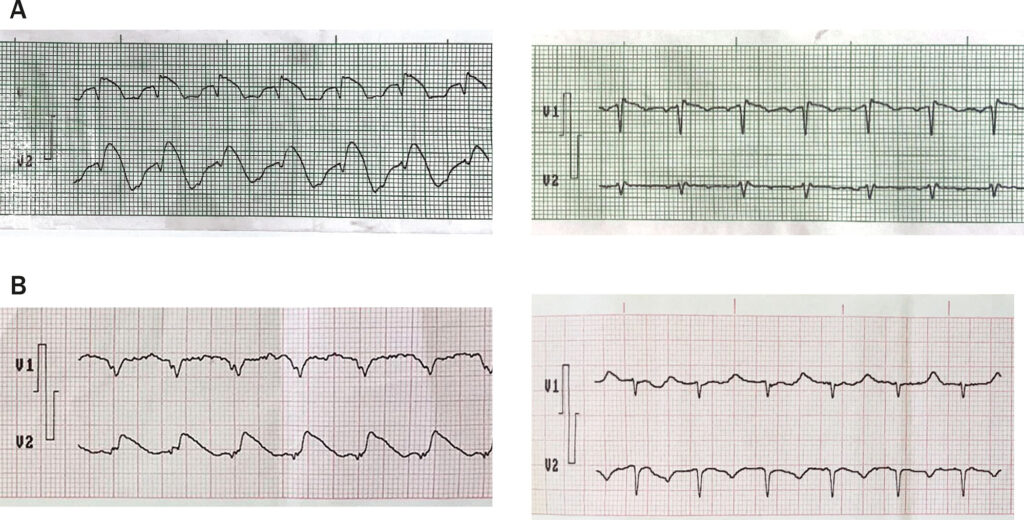Arq. Bras. Cardiol. 2025; 122(3): e20240526
Survival in Patients with Brugada Phenocopy. Case Series
Introduction
Brugada phenocopy (BP) refers to a situation in which the characteristic electrocardiographic patterns of Brugada syndrome (BS) are temporarily manifested, which are indistinguishable from the type 1 (coved) and 2 (saddleback) patterns of BS. Several additional criteria must be considered for an accurate diagnosis. These include the presence of an identifiable underlying cause, regression of the pattern once this cause is corrected, low pretest probability of BS, a negative result of a pharmacological induction test, and a negative genetic test.
Currently, the true mechanism that causes BP remains unknown. However, ST-segment elevation could be explained by the transmural gradient resulting from the loss of the action potential dome in the epicardium and not in the ventricular endocardium. This phenomenon originates from the transient increase in K outward currents (Ito) or the decrease in L-type Ca inward currents and peak Na currents in phase 1 of the action potential. Various reversible clinical conditions, such as disorders of the internal environment, mechanical compression, ischemia and pulmonary embolism, myocardial and pericardial diseases, among others, constitute its main etiologies.
[…]
Keywords: Brugada Syndrome; Case Reports; Ion Channels
418

